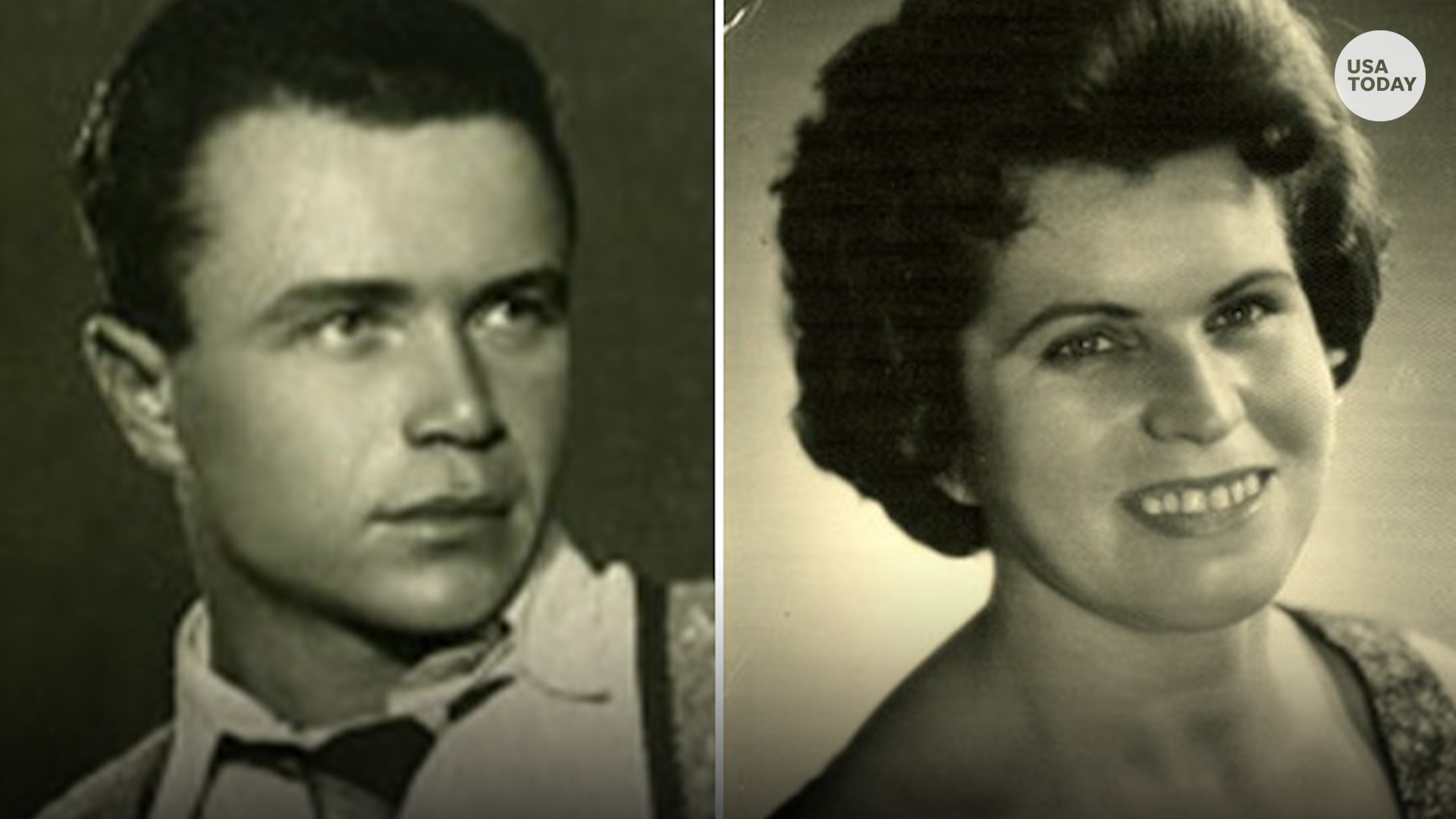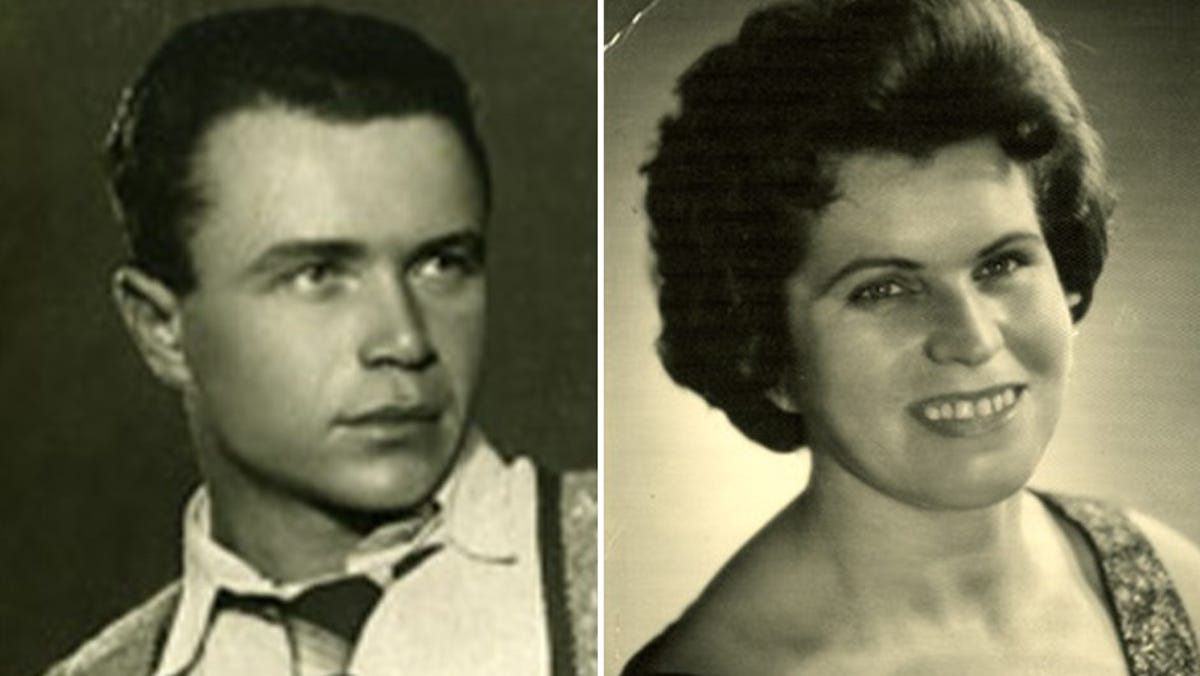
Love story of the Holocaust survivor
Isaak Tartakovsky escaped the Germans and fled to Ukraine where he met his wife. They share their love story on Holocaust Remembrance Day
Staff Video, USA TODAY
Isaak Tartakovsky was at the post office in Ukraine in 1953 when he spotted a woman he immediately recognized.
Her name was Lidiya Savchuk, and her family had saved his life in German-occupied Ukraine during World War II by hiding his identity as a Jewish soldier in the Soviet army who escaped a German prison camp.
The pair were reunited after nine years of not knowing what happened to the other as the war came to an end. They immediately rekindled the bond they had formed when Lidiya’s family risked their lives to help Isaak.
Soon after, “the story develops almost like it would be shown in Hollywood,” the couple’s son, Anatoly Tartakovsky, said in an interview with USA TODAY. He and his sister, Elena, recounted their family’s story with their mother by their side to mark International Holocaust Remembrance Day on Thursday.
Savchuk and her family are among the roughly 28,000 people recognized as the “Righteous Among the Nations,” an honor awarded by Yad Vashem, the World Holocaust Remembrance Center in Israel, for non-Jews who risked their lives to aid Jews during the genocide.
“When they were presented with a situation that was really impossible, they didn’t turn their head the other way. They did remarkable things,” said Dani Dayan, chairman of Yad Vashem.
“When we talk about the Holocaust, there are not many happy endings to personal stories. Most end with death,” Dayan said. “We should celebrate those occasions that are the opposite.”
Isaak Tartakovsky grew up poor in the small town of Volochysk in Ukraine’s Khmelnytskyi region, Anatoly and Elena said through an interpreter. His mother died when he was 5 years old. To escape the pogroms of Jews in the area, his father took the family to Kyiv. There, Tartakovsky began studying art but was drafted into the Soviet Army to fight in World War II.
Lidiya Savchuk grew up in Vinnytsia, and her family had many close Jewish friends, though they were not Jewish themselves. When the Nazis occupied Ukraine, her family feared for their safety but stayed in the city.
Savchuk’s brother joined the Soviet military, but as the war went on, the family knew nothing about where he was or whether he was alive.
Meanwhile, Isaak Tartakovsky was on the front lines and was captured by the Germans and taken to a concentration camp as a POW. Tartakovsky knew he could not reveal he was Jewish, Anatoly said.
He escaped through a small hole in the wall of the camp, Anatoly said. On the other side, Germans were allowing some Ukrainians to work for them in nearby occupied areas. Tartakovsky gave a fake name and said he was from Vinnytsia.
Once he made it to Vinnytsia, Tartakovsky feared he would be found out, Elena said, so he lived in abandoned houses and tried to survive. One day in 1942, he saw an older woman, who also appeared poor, sitting in front of her house. Starving, Tartakovsky asked for whatever food she could spare, Anatoly said.
That woman was Lidiya’s mother. Tartakovsky and the woman started talking, and soon her family invited him inside. They talked about their background and struggles. The family eventually revealed to him that they had a son in the Soviet Army and that they had helped one of his Jewish friends.
Hearing that story gave Tartakovsky the confidence to reveal his true identity, Anatoly said, and he asked whether he could live with the family.
Despite the risk, the Savchuk family agreed. “They just felt empathetic,” Anatoly said.
Tartakovsky lived with the family for more than a year, until Vinnytsia was liberated in March 1944. Throughout that period, Tartakovsky and the Savchuks risked death if they were caught. At one point, the family was forced to flee their home to the nearby suburbs amid the German occupation, but they allowed Tartakovsky to stay with them, pretending he was a distant relative.
International Holocaust Remembrance Day: Anti-Semitic attacks are on the rise
Anatoly and Elena said their mother and father were close during that period given that her family was helping protect him, but the relationship was not romantic. Years later, when they reconnected, Savchuk in her late 20s and Tartakovsky in his early 40s, it was their shared bond of such difficult experiences during the war that drew them close, Anatoly and Elena said.
The couple were married within a year. Tartakovsky became a well-known artist in Ukraine, and Anatoly attributed that success to the support of his mother.
Tartakovsky died in 2002 at age 90. Lidiya, almost 97, lives in Ukraine.
An estimated 1.5 million Jews in Ukraine were killed during the Holocaust, according to the United States Holocaust Memorial Museum. About 6 million Jews overall were killed. Ukraine had been home to the largest Jewish population in Europe before the war, which was largely decimated by mobile killing units called Einsatzgruppen and their collaborators. The units shot Jews near their homes rather than send them to concentration camps.
The family’s story – which is also being shared as part of a campaign called “Don’t Be a Bystander” from the Conference on Jewish Material Claims Against Germany to highlight those who risked their lives to help Jews during the Holocaust – has taken on a special meaning in 2022 given today’s uncertainty and tensions in Ukraine, Anatoly said.
“It wasn’t something which happened to some abstract person,” he said, describing why he thought his mother’s family took the risk to help his father. “It was a person who was standing in their kitchen, who was talking to them and asking for help. So they helped.”
MORE: US, Germany confront rising antisemitism, Holocaust denial
OPINION: As antisemitism spikes, a Holocaust survivor’s message: We must be ‘Upstanders’





